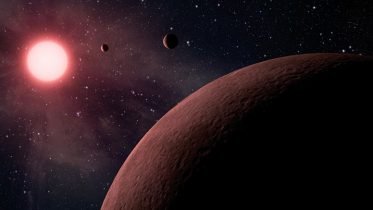.jpg)
NASA has released a list of 219 new planets, 10 of them orbiting their star, and the distance between the planet and its star allows it to gather water on its surface.
NASA has reported that these planets are located outside our solar system, where the nearest planet is four light years away.
With information derived from this catalog, and from data available to NASA audiences. It was found that 4034 planets were discovered to the hourly limit, and 3335 planets, including those outside the solar system, were verified, of which 50 planets were habitable.

The findings were presented at a news conference Monday at NASA’s Ames Research Center in California’s Silicon Valley.
The Kepler space telescope hunts for planets by detecting the minuscule drop in a star’s brightness that occurs when a planet crosses in front of it, called a transit.
This is the eighth release of the Kepler candidate catalog, gathered by reprocessing the entire set of data from Kepler’s observations during the first four years of its primary mission. This data will enable scientists to determine what planetary populations – from rocky bodies the size of Earth, to gas giants the size of Jupiter – make up the galaxy’s planetary demographics.
Perfectly!